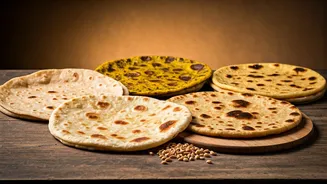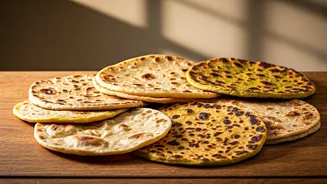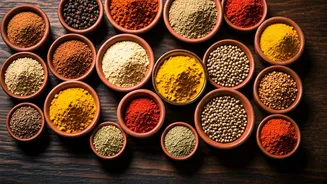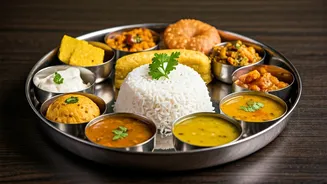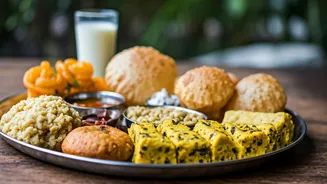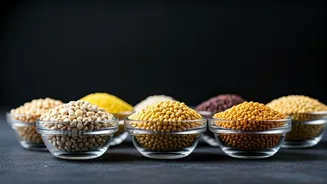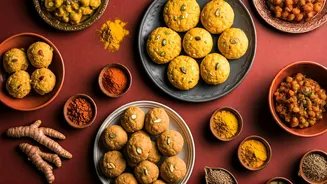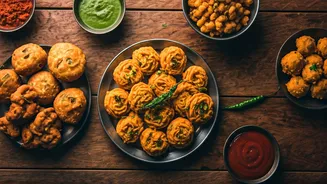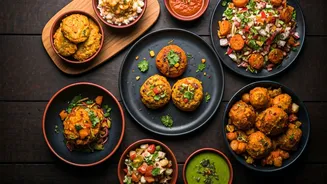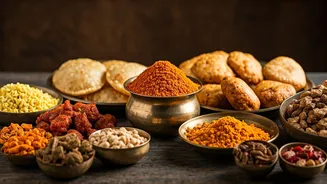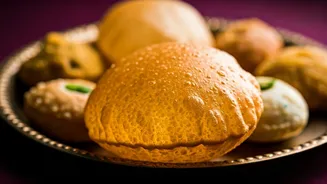Roti: A Staple
Rotis are an integral part of Indian cuisine, and their versatility is truly remarkable. From the soft and fluffy phulka to the thicker and heartier missi
roti, each type offers a unique taste, texture, and nutritional profile. The digestion time varies depending on the ingredients and preparation method. Factors like the type of flour used, the addition of ingredients like spices or vegetables, and even the cooking technique can all impact how long it takes your body to break down the roti. Understanding these variations can help you tailor your roti choices to your individual digestive needs and the demands of different seasons.
Phulka: The Light Choice
Phulka, also known as the puffed roti, is a light and airy flatbread, typically made from whole wheat flour. Its cooking process involves directly exposing the roti to the open flame, causing it to puff up. This process results in a quicker digestion time, making it suitable for any time of year but especially pleasant during warmer months when heavier foods might feel less appealing. Its simple ingredients and preparation make it easy on the digestive system, ideal for those seeking a lighter meal option. Enjoying a phulka with some light vegetables and a yogurt dip can offer a balanced meal without causing excessive heaviness.
Tawa Roti: Daily Bread
Tawa roti is a staple in many Indian households and is cooked on a flat griddle, or tawa. Made with whole wheat flour, this roti is a slightly more substantial option compared to phulka but still fairly easy to digest. It offers a moderate digestion time, making it a versatile choice suitable for most seasons. Its simple ingredients and preparation method contribute to its digestibility, allowing it to be a regular part of your diet without causing any major digestive issues. Tawa roti is adaptable; pair it with any curry or sabzi.
Missi Roti: A Hearty Option
Missi roti is made by combining whole wheat flour with gram flour (besan) and spices, creating a denser and more flavorful flatbread. The addition of gram flour adds fiber and protein, contributing to a slightly longer digestion time. This makes it a great choice during the colder months when the body needs more sustained energy and warmth. The spices used in missi roti also aid in digestion, making it a filling yet manageable option. Enjoy missi roti with a spicy curry to experience its true essence and benefit from its nutritional value.
Thepla: Spiced Delight
Thepla is a flavorful flatbread from Gujarat, often made with whole wheat flour, spices, and sometimes fenugreek leaves. The addition of spices and other ingredients increases its digestion time, offering a more sustained release of energy. Thepla is an excellent option for cooler weather or for those who need a more substantial meal to keep them feeling full for longer. It is also often packed for travel due to its longevity and ability to stay fresh for a period. Consuming thepla with yogurt or a pickle enhances the flavor and makes it even more enjoyable.
Bajra Roti: The Winter Warmth
Bajra roti, made from pearl millet flour (bajra), is a traditional winter staple. Bajra is a warming grain, making this roti ideal for the colder months. Due to its high fiber content, it has a longer digestion time and provides sustained energy. This roti is also known for its rich nutritional profile, offering essential minerals and nutrients. The earthy flavor and hearty texture make it a satisfying meal choice. Enjoy bajra roti with ghee, curd, and a side of vegetables to experience its wholesome goodness and the benefits it offers during the winter season.
Ragi Roti: The Nutrient Powerhouse
Ragi roti, made from finger millet flour (ragi), is highly nutritious and a good source of calcium. While it is digestible, the high fiber content can lead to a moderate digestion time. Ragi is a versatile grain suitable for various seasons, but it can be particularly beneficial during periods when you need an extra boost of energy and nutrients. Its slightly nutty flavor pairs well with a variety of side dishes. Including ragi roti in your diet can contribute to overall health and well-being, providing essential nutrients while being relatively easy to incorporate into any meal plan.
